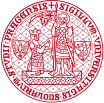


PhD Topics
Modeling Morpheme Flow among Languages
Guidelines
Borrowing is a word-formation process whereby a word from one language is adapted for use in another ([1]). More specifically, one can speak about borrowing morphemes, as, for example, a foreign word might be used as a newly imported root morpheme in a target language, which is immediately completed with derivational and inflectional morphemes already established in the target language (but also the other way round: a grammatical affix adopted from a source language can be used for enriching the vocabulary of a target language). Eventually, one can find a massive amount of correspondences in morpheme repertories of some languages caused by long-time co-evolution of the languages. The goal of the thesis is to develop and evaluate computational models of various borrowing channels along which such morphemes spread among languages, using evidence from modern synchronous multilingual corpora ([2]) and other multilingual language data resources ([3,4]).
References
[1] Winford, Donald. "Contact and borrowing." The Handbook of Language Contact. Blackwell Publishing, 170. 2010.
[2] Tiedemann, Jörg. "Parallel Data, Tools and Interfaces in OPUS." in: Proceedings of the Language Resources and Evaluation Conference 2012. 2012.
[3] Kyjánek, Lukáš, et al. "Universal Derivations Kickoff: A Collection of Harmonized Derivational Resources for Eleven Languages." Proceedings of the Second International Workshop on Resources and Tools for Derivational Morphology. 2019.
[4] Batsuren, Khuyagbaatar, Gabor Bella, and Fausto Giunchiglia. "CogNet: A Large-Scale Cognate Database." Proceedings of the 57th Annual Meeting of the Association for Computational Linguistics. 2019.